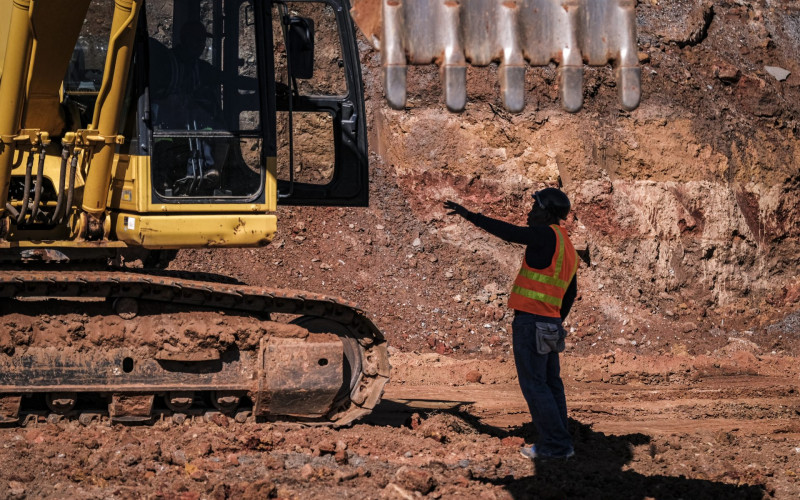At best, the accord will create the framework through which future negotiations and inevitable conflict may be managed without the re-emergence of violence at South Africa’s platinum mines. The accord commits signatories to denouncing violence, intimidation, lack of respect for life and property, and adherence to the law and tolerance of different views. Critically, the agreement forbids the carrying of weapons on mining property. AMCU president Joseph Mathunjwa has described the accord as a “positive stepping stone towards addressing socio-economic challenges facing the working class, subsequent to identifying the root causes of the mining instability and violence”.
Parties to the accord have agreed to set up structures, processes and timeframes to implement the objectives of the agreement within two weeks of signing the agreement. Addressing the labour union recognition framework, particularly the issue of recognition for minority unions, will be a central priority. The current legislative framework is built on the principle that only the majority union in any workplace has the right to bargain collectively and enter into binding wage agreements. Director of the Commission for Conciliation, Mediation and Arbitration, Nerine Kahn, has emphasised that this “winner-takes-all” approach has contributed significantly to the conflict at South Africa’s platinum mines in the context of AMCU’s rapid rise in popularity and increasing disaffection with the National Union of Mineworkers (NUM). The current union recognition framework is said to promote stability in labour negotiations and prevent mining companies from playing unions off against each other. However, the framework also raises the stakes among rival unions, increasing the risk of unrest and violence.
Collective bargaining on an industry level, potentially through the Chamber of Mines as is currently the case in the gold and coal sectors, has been raised as a possible alternative to current wage negotiation frameworks. The establishment of such an arrangement, however, is likely to require a protracted phase of negotiation, and in the meantime platinum companies are attempting to secure union agreements within existing frameworks. Following the Marikana massacre, Lonmin moved quickly to secure a wage agreement with workers in an attempt to restore peace at its operations, recognising AMCU as the new majority union at its operations. Impala Platinum, the world’s second largest platinum producer, has also recognised AMCU as the majority union at its mines, and Anglo Platinum may soon follow suit.
Ending violence at the mines and returning to a regulated and peaceful negotiation process should be the priority in the deliberations among government, companies and the unions, but the wider challenges facing the industry are far from over. Platinum demand is stagnant and, while the rising popularity of platinum jewellery, particularly in China, has helped offset the drop in demand from the European automotive sector, poor growth prospects in the European Union (EU) will continue to suppress demand. Ambitious investment programmes ahead of the global financial crisis and a rapid increase in recycling have resulted in oversupply in the market, making significant price increases in the short term unlikely. Input costs, particularly labour and electricity, have grown significantly – according to the Chamber of Mines electricity prices have increased by 238% since 2007.
South Africa’s platinum sector, now the largest component of the country’s mining industry, is facing grim prospects in the short to medium term future, and whatever collective bargaining framework structure adopted by the industry in the coming months is likely to continue facing severe challenges. While Anglo Platinum continues to engage with the Departments of Labour and Mineral Resources on its proposed restructuring, a process which may affect as many as 14 000 jobs, Anglo Platinum CEO Chris Griffiths admitted in a recent briefing to Parliament’s Portfolio Committee on Mineral Resources that he was “not hopeful” that the restructuring could be avoided. At the same parliamentary briefing Gideon du Plessis of trade union Solidarity noted that if Anglo Platinum is successful in its restructuring process other platinum producers may soon follow, leading to even greater job losses in the sector.
The Platinum Sector Peace and Stability Accord will not resolve the wider crisis in South Africa’s platinum sector; however, it does address the most pressing current concern, namely the threat of violence and lawlessness at South Africa’s platinum mines.
With AMCU now party to the agreement there appears to be new momentum to efforts at ending violence at South Africa’s platinum mines. However, as the sector continues to face challenges in the coming months, including potential significant job losses, the ability of the unions and other stakeholders to manage frustrations within mine communities will be tested.
AMCU and NUM must play a central role in promoting peaceful forms of protest and ensuring that its members express their demands without violence and further loss of life.







